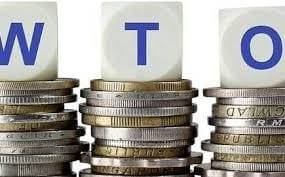T.K. Rout
- Introduction
The Indian Textile Industry has an overwhelming presence in the economic life of the country. The textiles industry contributes nearly 14% of industrial production, 4% of GDP and employs 45 million people directly and indirectly and accounts for about 11% share of the country’s total exports basket. The report of Working Group constituted by the Planning Commission on boosting India’s manufacturing exports during 12th Five Year Plan (2012-17), envisages India’s exports of Textiles and Clothing (T&C) at USD 64.11 billion by the end of March 2017. One of the major contributions to the growth of the sector is export of T&C across the globe. While the Readymade Garments account for almost 39% of the total textiles exports during 2012 – 13, the apparel and cotton textiles products together contribute nearly 74% of the total textiles exports of the country. India’s textiles products are mainly directed to US and the EU, which account for about two-thirds of India’s textiles exports. The other major export destinations are China, U.A.E, Sri Lanka, Saudi Arabia, Republic of Korea, Bangladesh, Turkey, Pakistan, Brazil, Hong-Kong, Canada and Egypt etc. As such, the destinations are also affecting the prospects of the textile industry in India.
In order to boost sectoral exports, countries have been providing various incentives to the manufacturing of the export segments. India is not an exception to that. During the financial crisis of the 2008, when the entire world economy was depressed, most of the countries tried to neutralise the negative impact of financial crisis on their exports through incentives may be in terms of subsidies and other measures also. Such measures might have helped the countries to mitigate the negative effect of financial crisis, but some of those countries are very new trying to highlight the incentives/subsidies provided by other countries as a cause for trade distortion and have been demanding rationalisation of subsidies particularly export subsidies as per the mandate of World Trade Organisation (WTO).
* Author is Deputy Director (Market Research), Textiles Committee, Mumbai and the views expressed are personal
India being one of the foremost members of WTO, Pressure is mounting on India to rationalise subsidies and incentives given to its textile sector. The European Union and Japan have joined hands with the US and Turkey to demand that India stop giving fresh subsidies and gradually phase out the existing ones as the textile sector had already achieved export competitiveness. The issue came up for discussion at a recent meeting of the WTO Committee on Subsidies and Countervailing Measures. However, the global turmoil in the recent past and its impact on economy induced the countries to think about the impact on the economy of rationalisation or removal of export subsidies as mandated by WTO.

